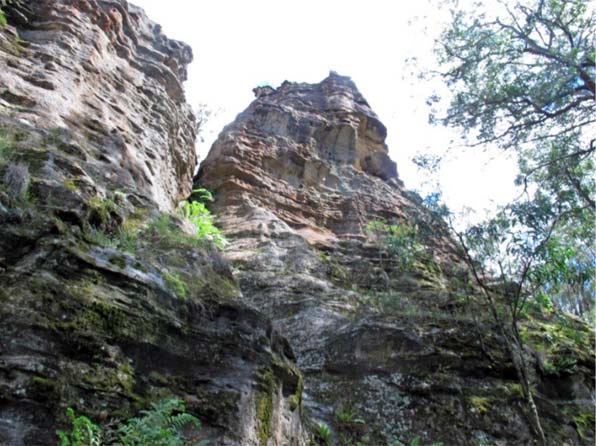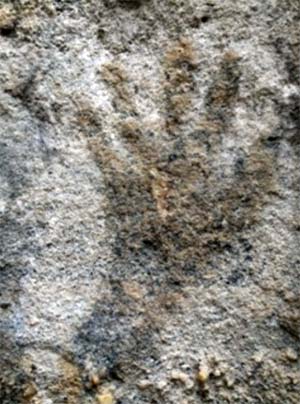A visitors’ book and a small warning sign mark the entrance to the long sandstone overhang which is the main “hand stencil” site in this Aboriginal place. It is reached by a steep informal path from a clearing studded with “brown barrel” Eucalypts and orchids. Down a groove in a tall pagoda next to the overhang flows a trickle of water nurturing mosses and other dark green vegetation.
The hand stencils were made by indigenous people of past centuries who blew a mix of locally obtained materials onto the rock surface after laying their hand and forearm in front of them. In contrast to some nearby sites, these hands and forearms seem to have belonged exclusively to adults.
This locality evokes a timeless and spiritual sensation in the visitor. By walking up the four wheel drive trail away from the brown barrel clearing towards Bungleboori you experience a great variety of pagoda shapes and pagoda dependent vegetation, especially as there is a humid microclimate
here. Mosses, foliose lichens and other lichens cascade down the surfaces and small ferns nestle in the crevices.
[Hand stencil © Marilyn Kraus]
There are a few locations where soil has infilled the clefts between the pagodas and you can see at close quarters how thin and quirkily patterned are many of the rock protuberances near the top. Some of the most fragile formations seem to be guarded by bull ants’ nests. Opportunities to gain an overview of the grand circle of these stone wonders are rare but it is worth
carefully attaining one of the vantage points.

[pergoda formations © Christine Davies]
Sadly, not all visitors are respectful, particularly some with off road vehicles. Implementation of a plan of management is overdue.
Thank you to Jim Smith for introducing me to this place.
© Don Morison

